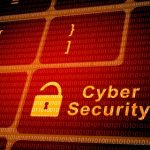Regional officials in California’s Nevada County gathered recently to observe the BurnBot RX2, a robot designed for controlled ground incineration, as it demonstrated its potential in wildfire risk management. The ongoing threat of wildfires has put agencies and utility companies under pressure to explore safer and more efficient methods for vegetation control and prescribed burning. With wildland fire incidents rising in frequency and severity, stakeholders are increasingly interested in technology solutions that can minimize human risk while addressing the ecological factors behind fire spread. These demonstrations offer additional insight into how automation could become a regular feature of wildfire prevention strategies, supplementing traditional approaches.
Reports from the last year highlighted early trials with robotic and autonomous fire management machines in the western United States, including pilot projects in Oregon and Washington. Earlier devices often focused on remote mowing or thinning vegetation rather than high-temperature ground treatment. These methods faced criticism for disturbing native soil and inadvertently helping invasive species spread. Recent innovations like the BurnBot RX2 mark a shift toward mimicking natural fire cycles and offer improved ecological outcomes over previous efforts that relied heavily on mechanical clearing or chemical application.
What Makes BurnBot RX2 Distinct?
BurnBot RX2 employs an integrated system to conduct precise, controlled burns, reaching ground temperatures as high as 1700°F to create firebreaks. Unlike bulldozers or graders that scrape away layers of soil and vegetation, the BurnBot RX2 leaves the soil structure largely intact while enabling large-scale prescribed fires. The robot is currently operated remotely by trained personnel—often with firefighting backgrounds—who remain within sight of the machine. Key elements include a burn chamber, steel rollers for embers, and water sprays to ensure immediate extinguishing of residual hot spots, contributing to both safety and efficiency.
Could BurnBot RX2 Improve Environmental Outcomes?
Ecological impact is a significant consideration in land management. BurnBot RX2’s proponents argue that its method of simulating low-impact, controlled fires supports the restoration of native species while limiting the return of invasive plants. The machinery’s approach reflects findings that post-burn regions are less likely to see invasive regrowth compared to areas cleared by heavy equipment. Cost efficiency is another advantage highlighted for municipalities and large landowners considering alternatives for extensive acreage maintenance. The ability to target and treat steep or hard-to-reach slopes also expands its application in challenging terrains.
How Are Local Communities Responding to BurnBot RX2?
In Nevada County, officials and conservationists see promise in integrating BurnBot RX2 into local wildfire prevention strategies, particularly in areas with broad, open land prone to rapid fire spread. Duane Strawser, Director of Emergency Services for Grass Valley, noted the suitability of the robot for regions requiring wide firebreaks, commenting,
“We have open, grass-filled acreage where this [machine] is very appropriate.”
The sentiment extended toward its ecological portfolio as well, with Strawser emphasizing,
“Burning the soil is definitely a healthier method of framing a fuel break or fire break. And that treatment, in most cases, leads to fewer invasive plant species returning quickly.”
Ideally, city leaders envision deploying the BurnBot RX2 for broad, level areas, while maintaining conventional manual and mechanical techniques for other landscapes.
As calls for scalable and sustainable wildfire management solutions increase, the BurnBot RX2 presents a pragmatic pathway to safer prescribed burning. The robot achieves a level of precision by integrating data collection for real-time mapping and analysis, allowing agencies to plan and carry out treatments with enhanced coordination. Continued evaluation by agencies and community partners will determine how quickly such robotics become routine tools in the broader campaign against catastrophic wildfire. Readers with interest in wildfire ecology may appreciate that prescribed burning, when properly managed, not only lowers fuel loads but also creates habitats conducive to biodiversity recovery. For agencies exploring new methods, understanding the operating limitations—such as terrain compatibility and resource allocation—remains crucial. The BurnBot RX2 stands as an example of how robotics can address environmental and public safety needs without relying solely on manual labor or ecologically disruptive heavy machinery.










